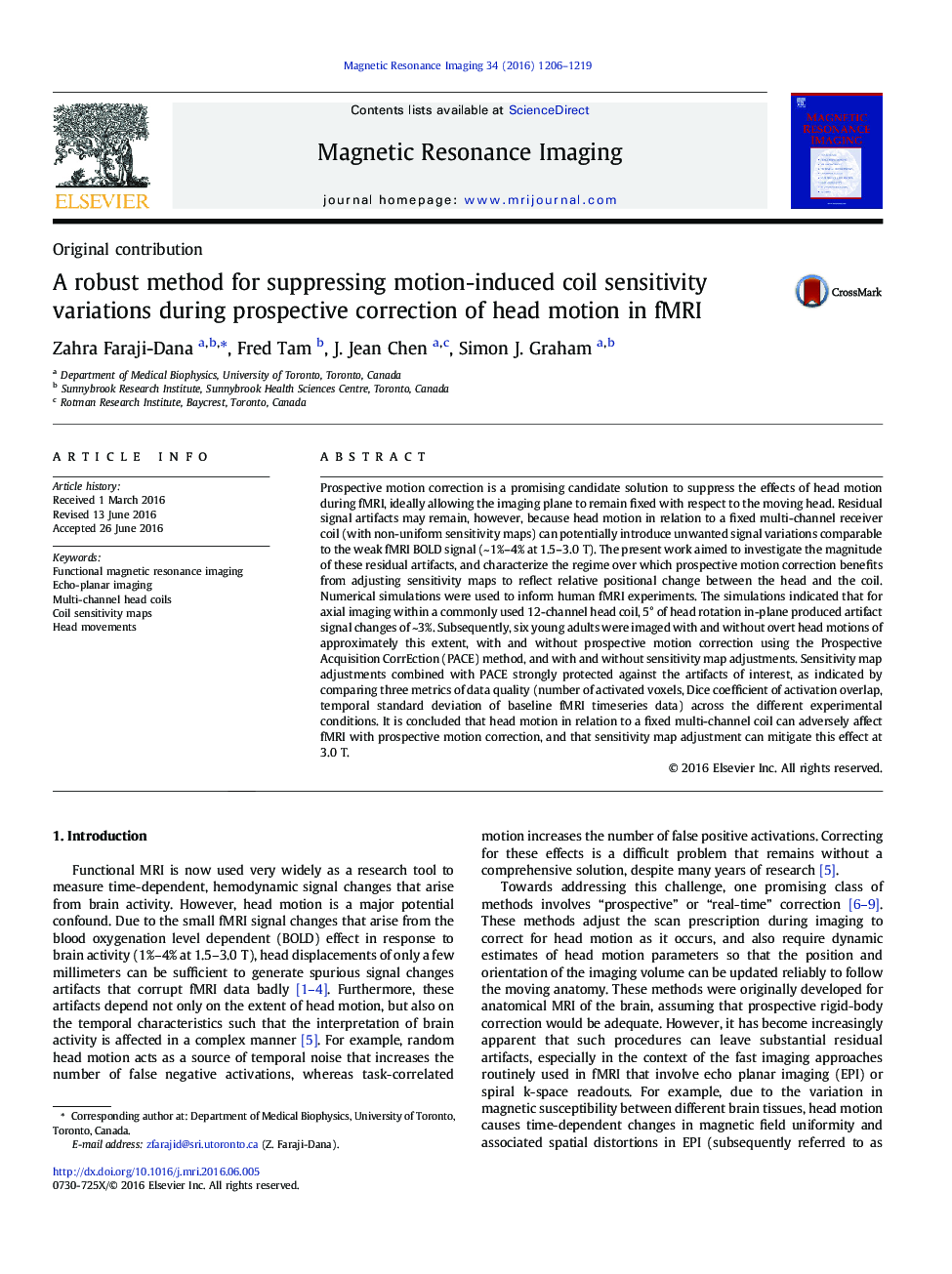| Article ID | Journal | Published Year | Pages | File Type |
|---|---|---|---|---|
| 1806127 | Magnetic Resonance Imaging | 2016 | 14 Pages |
Abstract
Prospective motion correction is a promising candidate solution to suppress the effects of head motion during fMRI, ideally allowing the imaging plane to remain fixed with respect to the moving head. Residual signal artifacts may remain, however, because head motion in relation to a fixed multi-channel receiver coil (with non-uniform sensitivity maps) can potentially introduce unwanted signal variations comparable to the weak fMRI BOLD signal (~1%-4% at 1.5-3.0 T). The present work aimed to investigate the magnitude of these residual artifacts, and characterize the regime over which prospective motion correction benefits from adjusting sensitivity maps to reflect relative positional change between the head and the coil. Numerical simulations were used to inform human fMRI experiments. The simulations indicated that for axial imaging within a commonly used 12-channel head coil, 5° of head rotation in-plane produced artifact signal changes of ~3%. Subsequently, six young adults were imaged with and without overt head motions of approximately this extent, with and without prospective motion correction using the Prospective Acquisition CorrEction (PACE) method, and with and without sensitivity map adjustments. Sensitivity map adjustments combined with PACE strongly protected against the artifacts of interest, as indicated by comparing three metrics of data quality (number of activated voxels, Dice coefficient of activation overlap, temporal standard deviation of baseline fMRI timeseries data) across the different experimental conditions. It is concluded that head motion in relation to a fixed multi-channel coil can adversely affect fMRI with prospective motion correction, and that sensitivity map adjustment can mitigate this effect at 3.0 T.
Related Topics
Physical Sciences and Engineering
Physics and Astronomy
Condensed Matter Physics
Authors
Zahra Faraji-Dana, Fred Tam, J. Jean Chen, Simon J. Graham,
